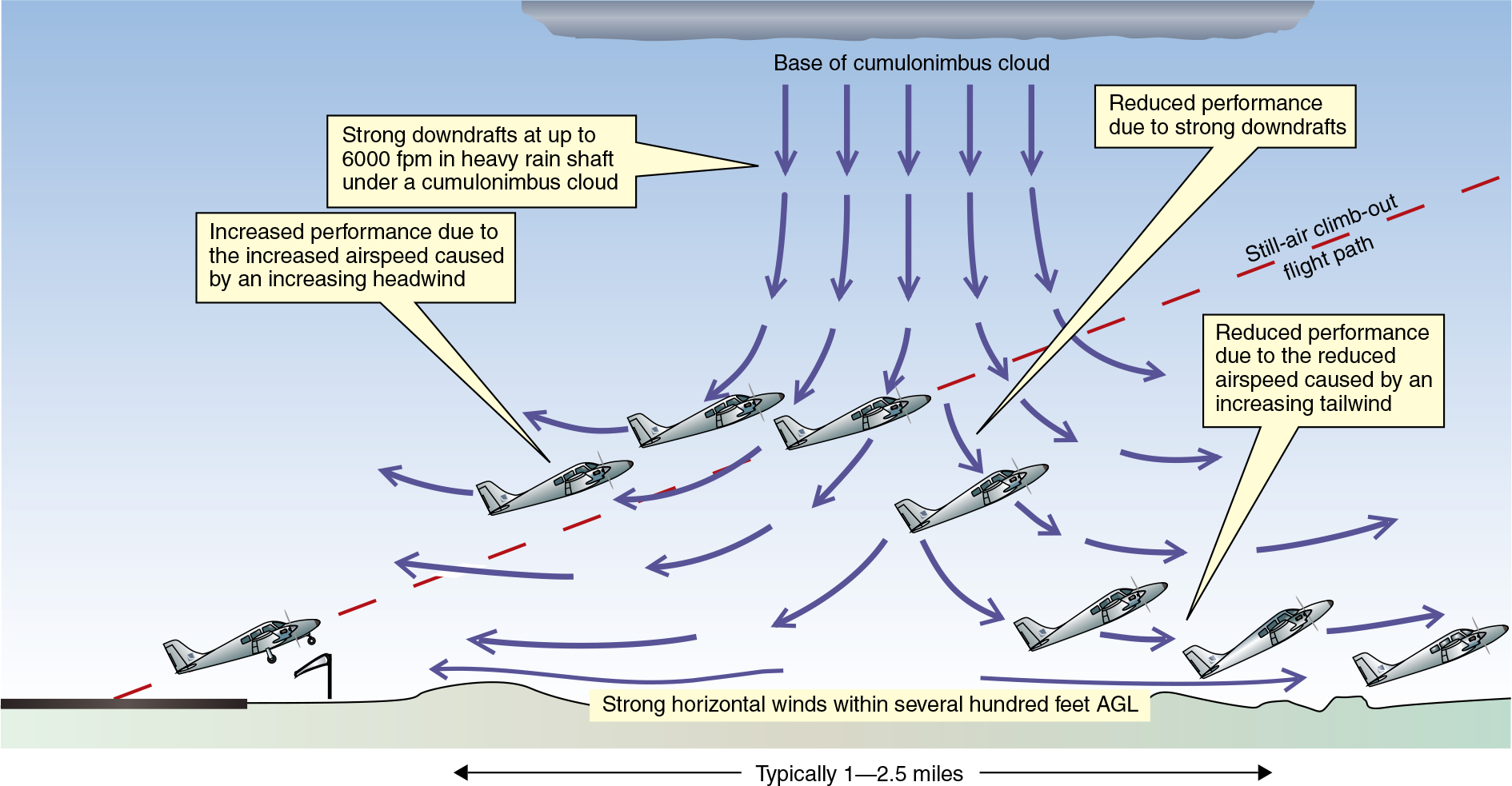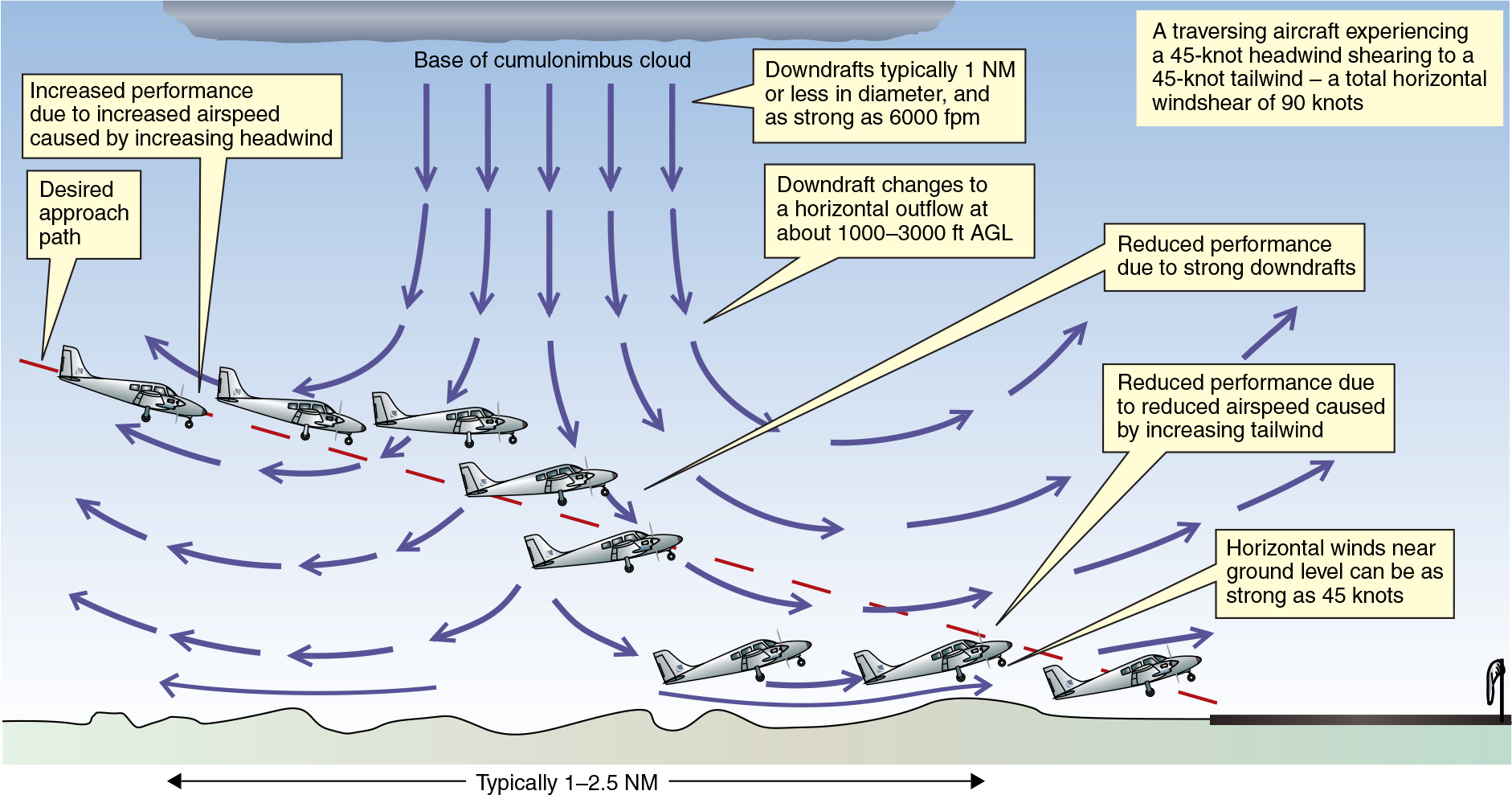Icing, reduced visibility from fog or particulates, turbulence, windshear, thunderstorms, and microbursts are all types of weather that pose significant operational challenges. We’ve already discussed the weather theory behind thunderstorms and other related weather events, so today we’ll focus on the things to keep in mind should you ever find yourself operating in the vicinity of such an event. Today’s advice comes from the latest edition of The Pilot’s Manual: Ground School (PM-2).
Thunderstorms
Do not land or take off if there is an active thunderstorm approaching the airport. Sudden wind changes, severe turbulence and windshear are possible. Avoid thunderstorms in flight by at least 10 miles and, in severe situations, by 20 miles. If you are passing downwind of them, you should perhaps increase this distance even further. Use your weather radar, if available, otherwise detour visually, making use of heavy rain showers, towering clouds, lightning and roll clouds as indicators of where mature storm cells are likely to be.
Remember that embedded thunderstorms may be obscured from sight by the general cloud layers, so avoid areas where embedded cumulonimbus clouds are forecast, unless you are equipped with serviceable thunderstorm detection equipment. Also avoid areas with six-tenths or more of thunderstorm coverage. Any thunderstorm with tops of 35,000 feet or higher should be regarded as extremely hazardous. When flying in the area of thunderstorms:
- fasten the seat belts and shoulder harnesses, and secure any loose objects;
- turn up the cockpit lights at night to lessen the danger of temporary blindness from nearby lightning; and
- do not fly under thunderstorms, because you may experience severe turbulence, strong downdrafts, microbursts, heavy hail and windshear.
If you cannot avoid flying through or near a thunderstorm:
- plan a course that will take minimum time through the hazardous area;
- establish a power setting for the recommended turbulence penetration speed;
- turn on pitot heat (to avoid loss of airspeed indication), carburetor heat or jet-engine anti-ice (to avoid power loss) and other anti-icing equipment (to avoid airframe icing). The most critical icing band within a cloud is from the freezing level (0°C) up to an altitude where the temperature is about –20°C, which is the temperature band where supercooled water drops are most likely. However, supercooled water drops have been observed in thunderstorms down to much lower temperatures, possibly as low as –40°C;
- maintain your heading by keeping the wings level with ailerons, and do not make sudden changes in pitch attitude with the elevators because sudden changes in pitch attitude may overstress the airplane structure. It may be advisable to disconnect the autopilot, or at least its altitude-hold and speed-hold functions, to avoid the autopilot making sudden changes in pitch attitude (causing additional structural stress) and sudden changes in power (increasing the risk of a power loss);
- avoid turns if possible, as this increases g-loading—continue heading straight ahead and avoid turning back once you have penetrated the storm, as a turn will increase stress on the airframe and also increase the stall speed. Maintaining the heading will most likely get you through the storm in minimum time;
- allow the airspeed to fluctuate in the turbulence, avoiding rapid power changes;
- monitor the flight and engine instruments, avoiding looking out of the cockpit too much to reduce the risk of temporary blindness from lightning; and
- use thunderstorm detection equipment. If the equipment is weather radar, manage the antenna tilt effectively so as not to over-scan or under-scan thunderstorm activity at other levels.
You may sometimes experience St. Elmo’s fire, a spectacular static electricity discharge across the windshield, or from sharp edges or points on the airplane’s structure, especially at night. St. Elmo’s fire is not dangerous.
Microbursts
An aircraft entering the area of a microburst within 1,000–3,000 feet AGL will first encounter an increasing headwind. The aircraft will initially maintain its inertial speed over the ground (its groundspeed) and the increased headwind will cause it to have a higher airspeed, therefore increased performance. It will tend to fly above the original flight path. Then the aircraft will enter the downburst shaft and will be carried earthward in the strong downward air current—a dramatic loss of performance.
As the aircraft flies out of the downburst shaft (hopefully), the situation is not greatly improved. It will fly into an area of increasing tailwind. As the aircraft will tend to maintain its inertial groundspeed initially, the increasing tailwind will cause the airspeed to decay—a reduced airspeed, resulting in reduced aircraft performance.
Even with the addition of full power and suitable adjustments to pitch attitude by the pilot, the airplane may struggle to maintain a safe airspeed and flight path. Traversing some small, strong microbursts safely may be beyond the performance capabilities of any aircraft. The following figures depict the likely effect on an aircraft encountering a microburst under a thunderstorm on approach and after takeoff.

The dangers of a microburst on approach to land.

The dangers of a microburst after takeoff.




